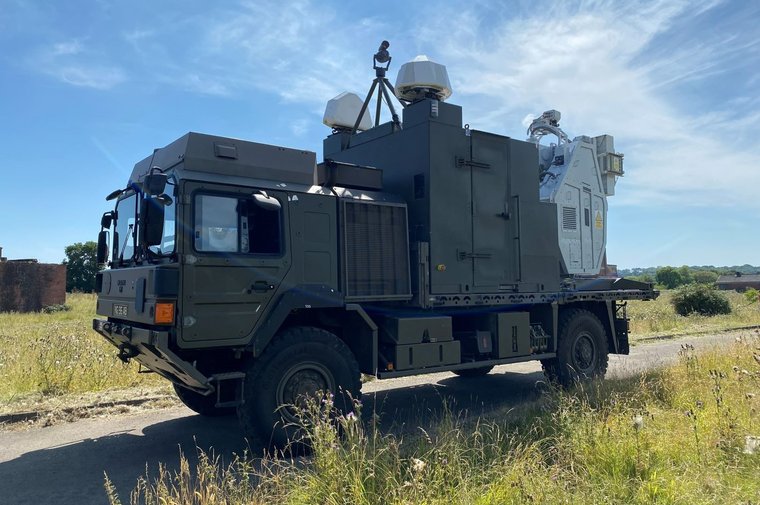British soldiers successfully complete anti-drone EW test firing
Details
More Products & Services
Products & Services
Military Unmanned Systems Handbook
Shephard Media
The Military Unmanned Systems Handbook (Digital Download) is an international guide to the military UV industry and provides detailed information on air, ground and sea (surface & sub-sea) vehicles as well as subsystems. What's included: Unencrypted 390+ page PDF of equipment and supplier information Market summary
Defence Insight
Shephard Media
Some of the things people like you use Defence Insight for:
- Total addressable market sizing ($)
- Competitor analysis
- Cost analysis
- Market forecasting
- Growth identification
- Increasing closing ratio
- Increasing closing order value
- Estimating product potential
- Calculating sales forecasting
- Supply and demand analysis
- Total addressable market sizing ($)
- Competitor analysis
- Cost analysis
- Market forecasting
- Growth identification
- Increasing closing ratio
- Increasing closing order value
- Estimating product potential
- Calculating sales forecasting
- Supply and demand analysis
Shephard Plus Update
Shephard Media
Shephard Plus is updating in June 2018 with rich new capabilities, and is now one of the most cost-effective and valuable aerospace and defence market intell...
Description
The Thales Radio Frequency Directed Energy Weapon (RFDEW) demonstrator has been successfully deployed in a test to target and engage uncrewed aerial systems (UAS). The success was announced in late December.
The live firing trial was conducted by the British Army's Royal Artillery Trials and Development Unit and 7 Air Defence Group at Manorbier range in west Wales, where they successfully targeted and engaged drones.
The system has been developed by a Thales UK-led consortium under a contract awarded by Team HERSA, the joint enterprise between the UK's Defence Equipment & Support (DE&) agency and the Defence Science and Technology Laboratory (Dstl).
Related Articles
UK's EW UAS-jammer set for field testing
The UK's directed energy counter-unmanned weapon could see service in 2026
The RFDEW demonstrator is being developed through Project Ealing to detect, track and engage a range of threats across land, air and sea. The system is designed to neutralise targets up to 1km away with near instant effect and provide a cost-effective complement to traditional missile-base air defence systems in future.
In September last year, Thales maritime missiles and directed energy sales manager Ivor Humphrey said the programme was moving at speed.
“The experimental period has come to an end, or coming to an end, and it then moves on to an accelerated programme of development,” Humphrey commented.“There is a request from the MoD to accelerate and identify the ability to deliver into service by 2026.
“We've done a pile of work understanding both our supply chain [and on] the design work we need to do to take it from an experimental system to a minimal deployable capability.
“We believe we can start delivering the first one off the production line within in 12 months within contract award,” he added.
The live firing trial was conducted by the British Army's Royal Artillery Trials and Development Unit and 7 Air Defence Group at Manorbier range in west Wales, where they successfully targeted and engaged drones.
The system has been developed by a Thales UK-led consortium under a contract awarded by Team HERSA, the joint enterprise between the UK's Defence Equipment & Support (DE&) agency and the Defence Science and Technology Laboratory (Dstl).
Related Articles
UK's EW UAS-jammer set for field testing
The UK's directed energy counter-unmanned weapon could see service in 2026
The RFDEW demonstrator is being developed through Project Ealing to detect, track and engage a range of threats across land, air and sea. The system is designed to neutralise targets up to 1km away with near instant effect and provide a cost-effective complement to traditional missile-base air defence systems in future.
In September last year, Thales maritime missiles and directed energy sales manager Ivor Humphrey said the programme was moving at speed.
“The experimental period has come to an end, or coming to an end, and it then moves on to an accelerated programme of development,” Humphrey commented.“There is a request from the MoD to accelerate and identify the ability to deliver into service by 2026.
“We've done a pile of work understanding both our supply chain [and on] the design work we need to do to take it from an experimental system to a minimal deployable capability.
“We believe we can start delivering the first one off the production line within in 12 months within contract award,” he added.

Share
Recent Chats
Share via email
Future: handle WhatsApp here
Future: handle LinkedIn here
Future: handle Twitter here
SUBMENU HERE
Share via Chat
Copy Link



